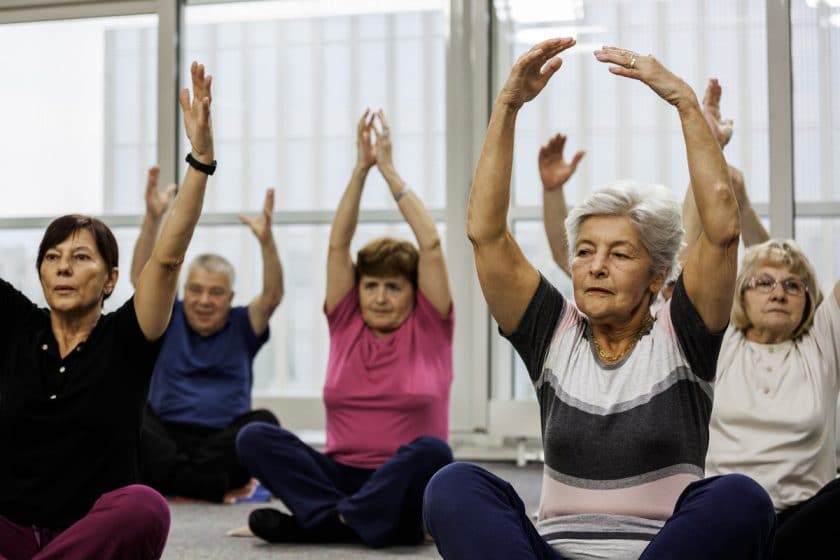Senior living homes have shed the ‘old age homes’ stigma once associated with facilities for the elderly, becoming a respectable real estate category – one that gains even more relevance in times of the current normal. These projects have healthcare staff, scalable facilities, and processes to keep them safe because the elderly are a high-risk group for the novel coronavirus. Standard housing projects lack in-house doctors and nurses and quick access to hospitals and strict sanitation procedures. In addition, visitors are monitored and can easily be curtailed to meet the goal of maintaining a vibrant senior community.
According to the United Nations Population Fund and HelpAge India, India’s elderly population will reach 173 million by 2026. In addition, the current pandemic has increased demand for senior living facilities and highlighted the elderly’s need for safety, care, well-being, and companionship. As a result, this asset class represents a significant opportunity for developers.
However, the senior living sector in India is still in its infancy, and few developers have attempted to capitalise on this opportunity to its full potential. This is unfortunate because, if approached strategically, this sector has enormous potential. According to Indian Census projections, the proportion of elders as a percentage of the total population in the country will have risen from around 7.5% in 2001 to almost 12.5% by 2026 and surpass 19.5% by 2050.
Though a vaccination drive for senior citizens has aided the industry’s recovery, it is now more important than ever to analyse what trends will aid, obstruct, or obscure efforts to recover from the challenges posed by this unavoidable circumstance in many households. The pandemic presented many challenges to seniors living alone and those in mixed family environments, ranging from the inability to access necessities during the lockdown to the loss of personal space due to remote working. This is where the need for community formation comes into play, where people can stay socially engaged, physically fit, mentally alert, intellectually stimulated. The senior-friendly communities aim to serve this purpose itself.
Significant untapped potential
The fact that India’s elderly population is expected to reach 173 million by 2026 suggests that there is significant untapped potential in the senior living segment, with very little current supply. According to a recent industry report, it is estimated that approximately 4,500 senior living units are available in the market, with over 2,000 units in various stages of construction.
Senior living projects were previously concentrated primarily in southern Indian states such as Kerala, Karnataka, Tamil Nadu, and Andhra Pradesh. Surprisingly, this geographic distribution was mainly due to outward migration. Following that, the concept spread to other states and cities, with both large and small builders entering this market. South India’s prominent senior living hubs include Coimbatore, Puducherry, Chennai, Bangalore, Kodaikanal, Mysore, Kochi, and Kanchipuram. Coimbatore has the most projects out of all of them.
There is a good reason for South Indian cities emerging as the most vibrant senior living hubs. The favourable climate, improved connectivity, and an abundance of trained healthcare workers are all significant factors contributing to their dominance in this field. Other senior living hotspots in India include Pune and Vadodara in the west, Bhiwadi, Chandigarh, Jaipur, Dehradun, Faridabad, and others in the east.
The ongoing process of nationwide vaccination drives and adapting to a new normal has aided in the revival of this multigenerational living. Senior living communities that offer immersive facility management mechanisms and inward growth toward a healthy lifestyle have regained the trust of potential homebuyers in this segment. As a result, the demand curve for many developers has risen in comparison to pre-covid times. Another changing trend in the industry is the increased acceptance and interest of ‘Next of Kin’ (NOKs) in these properties, as opposed to previously.
As a result, a successful senior living project necessitates extensive research that goes far beyond simply plotting demand graphs. The developer spread for this specific segment is limited because it necessitates a combination of senior-focused customised specialisations and facilities. Building projects for senior-friendly homes are not typical ‘build-sell-forget’ propositions, but they require a whole elderly care framework for community living, as the entire model would lose its inherent objective and purpose otherwise.
The way ahead
The pandemic has added a new layer to the problem. Going forward, communities will be developed, designed, marketed, and operated following new requirements. The next few years, including 2021, will be shaped by dedicated efforts to curate the next reiteration of senior living. Because of the rise of nuclear families, increased life expectancy, and people living across borders, ‘independent seniors’ are becoming a new demographic. Such seniors do not settle for traditional nursing homes because they prefer – and can afford – autonomy and the company of their peers their age in well-equipped retirement communities.
As a result, even as the vaccine allows them to look forward with renewed optimism, senior living is rapidly evolving to be much more than a unique blend of real estate, hospitality, and healthcare.
This article is contributed by Murali Malayappan, CMD, Shriram Properties.
(The views expressed here are solely those of the author and do not necessarily represent or reflect the views of RoofandFloor)





